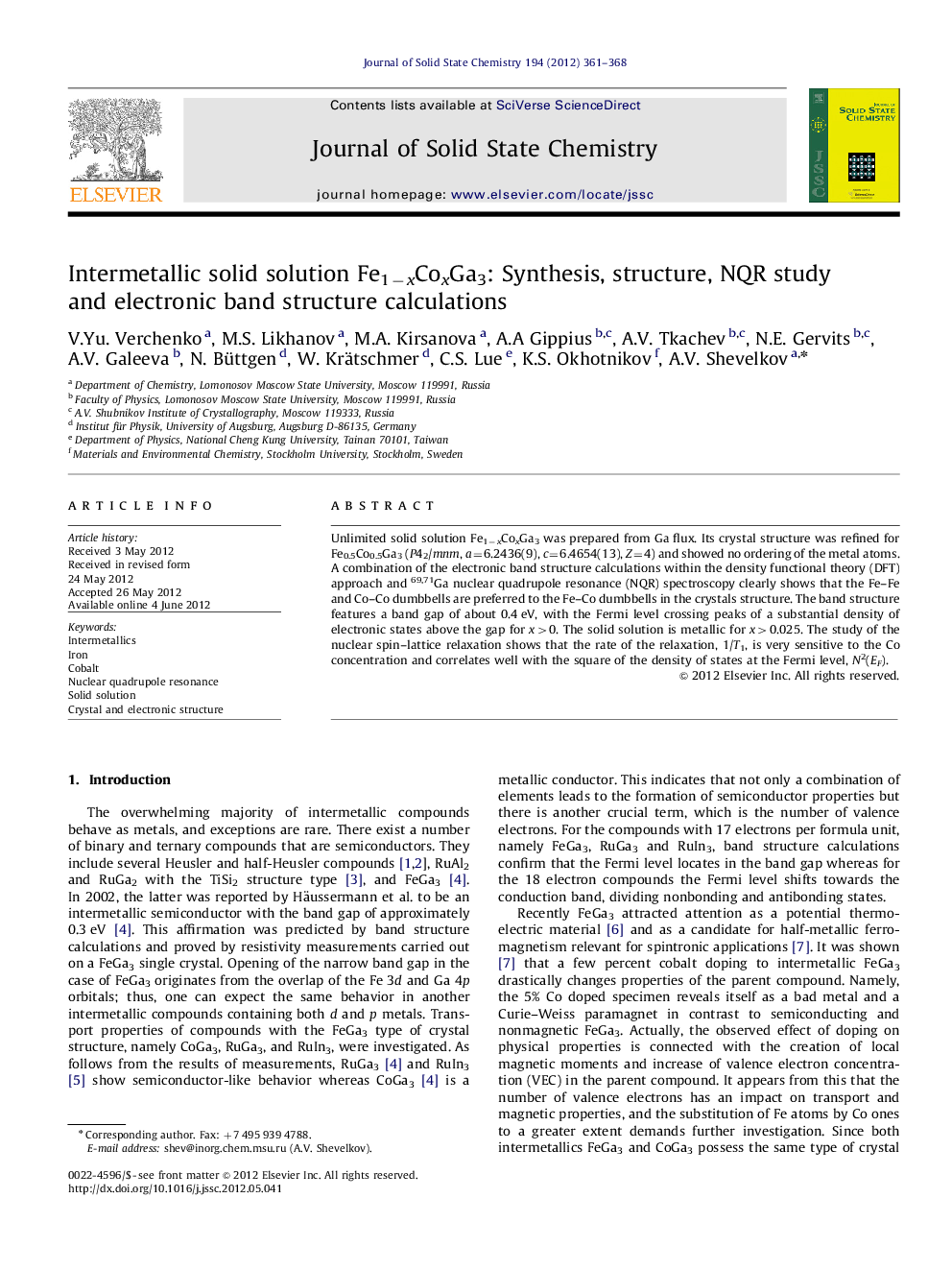| کد مقاله | کد نشریه | سال انتشار | مقاله انگلیسی | نسخه تمام متن |
|---|---|---|---|---|
| 1330290 | 1500122 | 2012 | 8 صفحه PDF | دانلود رایگان |

Unlimited solid solution Fe1−xCoxGa3 was prepared from Ga flux. Its crystal structure was refined for Fe0.5Co0.5Ga3 (P42/mnm, a=6.2436(9), c=6.4654(13), Z=4) and showed no ordering of the metal atoms. A combination of the electronic band structure calculations within the density functional theory (DFT) approach and 69,71Ga nuclear quadrupole resonance (NQR) spectroscopy clearly shows that the Fe–Fe and Co–Co dumbbells are preferred to the Fe–Co dumbbells in the crystals structure. The band structure features a band gap of about 0.4 eV, with the Fermi level crossing peaks of a substantial density of electronic states above the gap for x>0. The solid solution is metallic for x>0.025. The study of the nuclear spin–lattice relaxation shows that the rate of the relaxation, 1/T1, is very sensitive to the Co concentration and correlates well with the square of the density of states at the Fermi level, N2(EF).
Rate of the nuclear spin–lattice relaxation, 1/T1, observed in the 69Ga NQR experiments for the intermetallic solid solution Fe1−xCoxGa3 is the highest for x=0.25 with the highest calculated density of electronic states at the Fermi level, N(EF); in general, 1/T1 correlates with N2(EF).Figure optionsDownload as PowerPoint slideHighlights
► Fe1−xCoxGa3 solid solution is prepared in single crystalline form from Ga flux.
► In the crystal structure Fe–Fe and Co–Co dumbbells are preferred to Fe–Co dumbbells.
► Metal-to-semiconductor transition occurs at 0
► Rate of nuclear spin–lattice relaxation follows squared DOS at the Fermi level.
Journal: Journal of Solid State Chemistry - Volume 194, October 2012, Pages 361–368